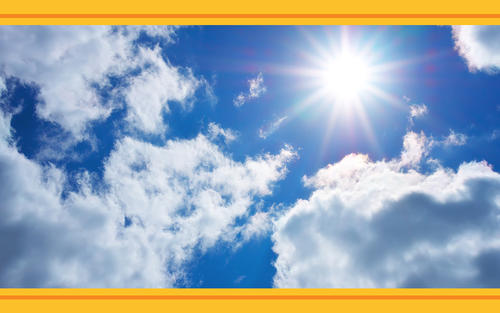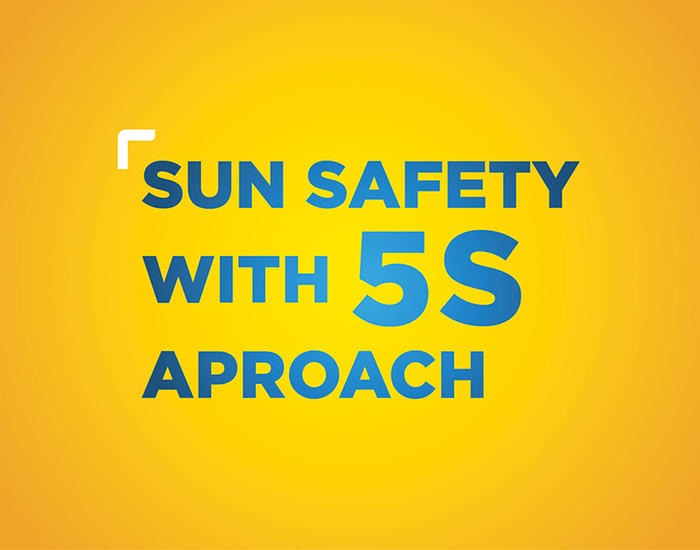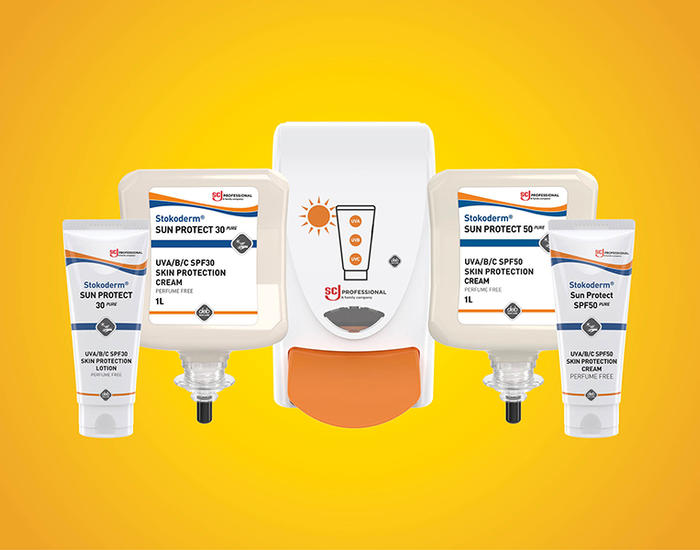
UV PROTECTION IN WORKPLACE

Ultraviolet (UV) radiation is an invisible type of radiation produced by the sun. There are three distinct types: UVA, UVB and UVC rays[1].
UVA rays have a longer wavelength, which means they are able to penetrate into deeper layers of the skin – these rays can also cause premature ageing[1].
UVB rays can significantly contribute to the development of skin cancer. These rays have a medium wavelength and can burn the outer layers of the skin[1].
Whilst UVA & UVB rays reaches the earth’s surface, shorter wavelength UVC radiation is blocked by the ozone layer[1]. UVC rays are also damaging and can be created artificially during industrial processes such as welding[2].
OUTDOOR WORKERS HAVE A HIGHER THAN AVERAGE RISK OF DEVELOPING SKIN CANCER [3]
Each episode of sunburn increases the risk of getting skin cancer[4].
In order to stay protected as much as possible, an average-sized adult should apply at least six full teaspoons to cover the body, which equates to more than half a teaspoon on each arm and the face/neck including ears.
15 to 20 MINUTES of unprotected sun exposure per day, without skin reddening or burning, should be sufficient for most people to produce the required vitamin D levels[5].
REMEMBER, IN LARGER DOSES UV LIGHT CAN DAMAGE OUR SKIN producing burns, skin ageing, cell mutations and even skin cancer[6].
Below, you will find our suite of best practice training and awareness tools that empower employers and employees to help protect themselves from harmful UV rays, in just a few simple steps.

PROTECT YOUR WORKERS TODAY:
-

Follow the Best Practice
Find out more -

Request a FREE UV Pack
Find out more -

View the Product Range
Find out more -

Get In Touch NOW!
Find out more
References:
[1] https://www.who.int/news-room/q-a-detail/radiation-ultraviolet-(uv)
[2] https://www.cancer.org/cancer/cancer-causes/radiation-exposure/uv-radiation.html
[3] https://www.ncbi.nlm.nih.gov/pmc/articles/PMC6130134/#:~:text=The%20main%20findings%20were%20that,significantly%20associated%20with%20G3%20cancers
[4] https://www.cancerresearchuk.org/about-cancer/causes-of-cancer/sun-uv-and-cancer/how-does-the-sun-and-uv-cause-cancer
[5] https://www.skcin.org/skinCancerInformation/theVitaminDDebate.htm [6] https://www.skincancer.org/risk-factors/uv-radiation/
